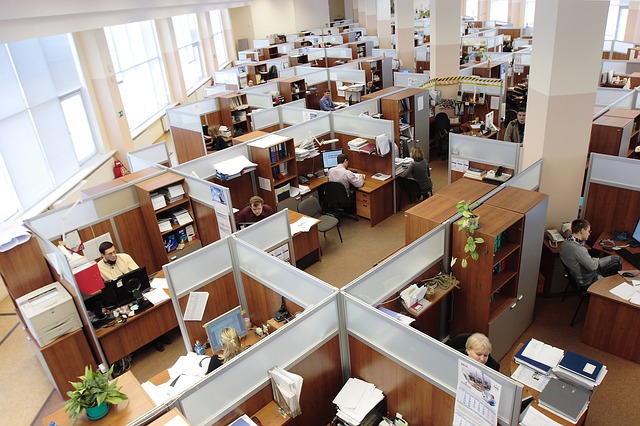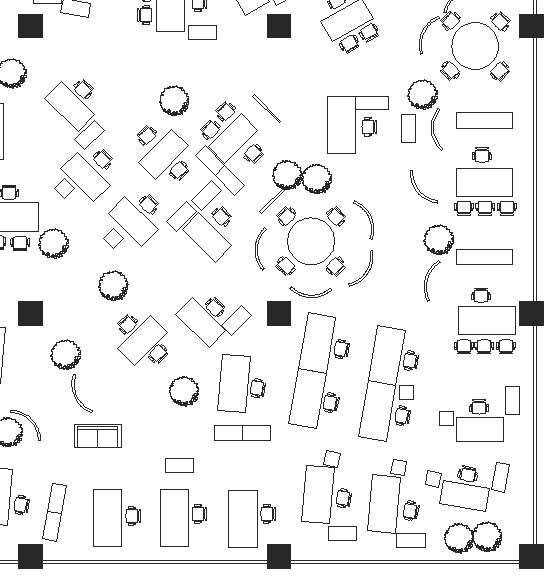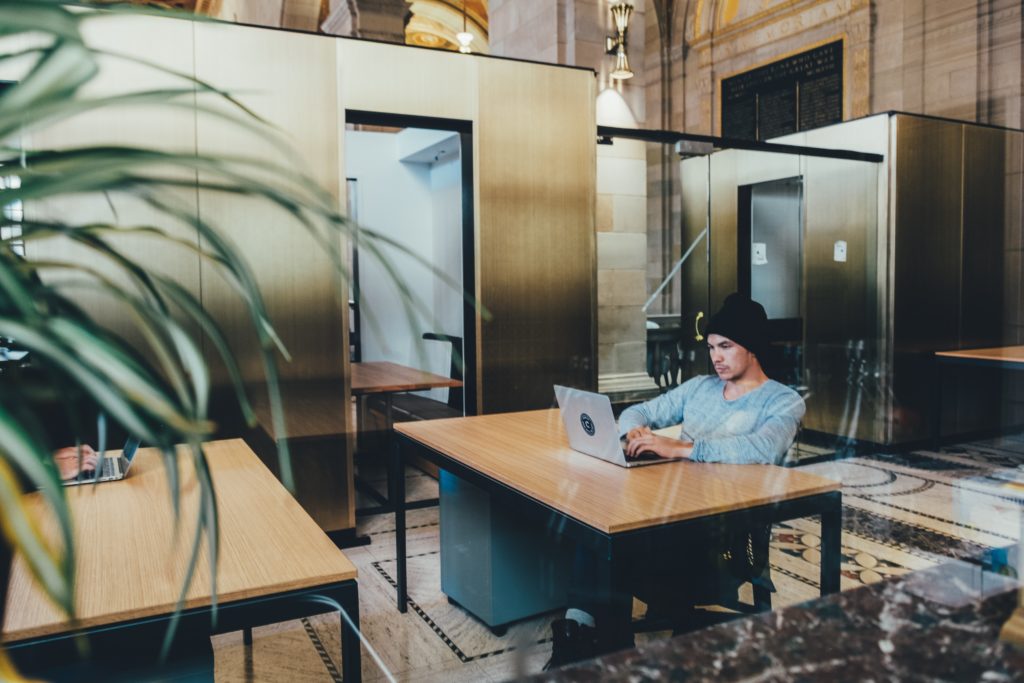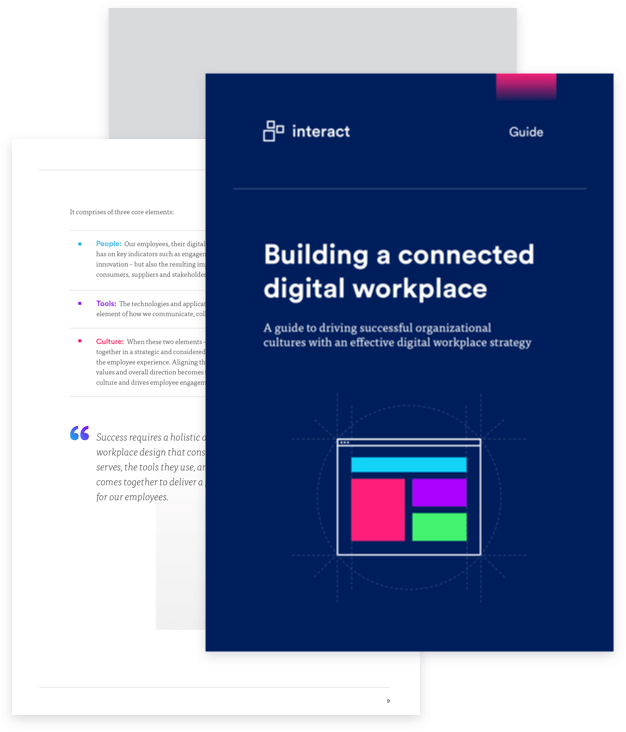Bürolandschaft: how the way we work has shaped the office
Office spaces reflect how we work, but in the era of the digital workplace, how will where we work adapt to how we work?

Watching a series like Mad Men gives you a great insight into the changing office spaces of the 20th century. As the typing pools and closed offices of series one makes way for a more open working space as the show enters the Sixties, the viewer is given subtle references to the evolution of working space after the post-war boom.
And it continues to evolve. The 1990s saw cubicles being introduced to block out the noise and increase concentrations levels that were being lost in wide open spaces. However, these working boxes soon became synonymous with a loss of identity, lack of sunlight, a drop in contact, and communication.

The changes in space reflect how we work – but how we work is affected by technology. Digital technology and flexible working have meant that the places we go to work have had to adapt accordingly. New developments have impacted not just how we work, but where we work. In the past decade, the creation of the digital workplace has meant that the current working population has found themselves in a flux of new apps, tools, and ways of working. The digital workplace is in its infancy, and there is still some confusion as to what it actually means.
In the ensuing babble to define what this term stands for, a leading tech analyst published a report and declared the little-known but relatively archaic term “Bürolandschaft” as one of the leading proponents that will drive the digital workplace.
Its feature in a prominent paper prompted a scratching of heads across the internet. What was Bürolandschaft? And how does it relate to the digital workplace?
What is Bürolandschaft?
Office space in the 1940s and 1950s Europe and the US operated around closed doors and bullpen offices. However, the fast rate of growth in post-war Germany paired with a desire to move on from the first half of the twentieth century allowed the country to open up to a fresh way of thinking.
A consulting group that was created in 1958 by brothers Eberhard and Wolfgang Schnelle focused on office planning and looked to change the current status quo. Their idea was to remove the uniform rows of desks and introduce a plan that was more organic and natural. In turn, they created an approach called Bürolandschaft, which translates as ‘office landscape.’
With the Schnelle brothers’ Bürolandschaft, managers were pulled out of offices and onto to the main floor, areas were separated by plants and temporary screens were put up to reflect the needs of teams and communication.

This reorganization was also designed to help demolish strict workplace cultures and protocols that were inherent in the old office layouts.
The modification of workspace continued with the work of Robert Propst, a designer of office furniture which espoused the philosophies of Bürolandschaft. Propst’s desire for egalitarian workspaces with a focus on ‘human-ness’ was put together in his 1968 treatise ‘A Facility Based on Change’.
However, the pull of management structure, with its command and control linearity, meant that the concepts of Bürolandschaft were abandoned for the systematic desk rows that still exist in many modern offices.
The resurrection of Bürolandschaft
And with Bürolandschaft dead and buried, workspaces have continued to change. The 21st century has spawned the digital workplace which is now compromising the role of a bricks-and-mortar office space. With so many tools available to aid work at home or remotely, there is less focus on commuting to a building to work. The future will see how we can recreate a productive, flexible working environment anywhere.
But Bürolandschaft wasn’t entirely forgotten about. In 2016, Gartner published Top 10 Technologies Driving the Digital Workplace. The report looked at all the technical elements that are soon to shape the way we work and interact within the office space.
Amid the tech forecasts of the report was a strange inclusion positioned at number five. Bürolandschaft was dragged out of the 20th century to now describe its part in the modern workplace. So what was this 60-year-old concept doing sitting beside contemporary developments like AI, ambient knowledge and personal clouds?
Bürolandschaft in the 21st century

The Gartner resurrection of Bürolandschaft is striking. The Schnelle brothers’ original concept was born out of a new wave of thinking, in a reshaped world fresh from the brutalities of World War II.
Social schemes and new industries were created across Europe in the aftermath of the Second World War. The founding of the European Common Market, the Wirtschaftwunder of the German economy and the forming of NATO were all setting the scene for the inclusive and collaborative nature of Bürolandschaft which focused on breaking down figurative and literal barriers and encouraging flexibility.
It is these principles that make it an essential part of the digital workplace now. Just as Eberhard and Wolfgang were looking for new ways of working in post-war Europe, so the 21st-century office is seeing how the balance of technology and the physical environment will play out.
Gartner describes the reworking of the concept as follows:
“Bürolandschaft highlights the role of the physical office in the digital workplace. Office space configuration is important, especially when supporting a mobile workforce. CIOs will need to work with the facilities department to enact change. This can also mean developing more “smart” workspaces, leveraging the Internet of Things.”
What Bürolandschaft means in the digital workplace

So how can we implement the philosophy of Bürolandschaft into the digital workplace? While Gartner describes the use of smart buildings and offices, it will take some time, and significant investment, before this becomes a viable reality.
Despite this, Bürolandschaft still has impacts on our day-to-day working lives.
1. Virtual proximity
The digital workplace encourages working from anywhere. By this very fact, the digital workplace has to enable a culture of collaboration regardless of location. Virtual proximity means you can communicate and collaborate with colleagues halfway across the world, across time zones and languages via a combination of broadcasts, video conferencing and instant messaging services.
2. Access to information
Equality is a huge part of Bürolandschaft – the idea that hierarchical structures should be put to one side in order for everyone to be treated equally. Eberhard and Wolfgang originally meant the equal use of car parking space, restrooms and eating areas. But in the digital workplace, it refers to the equal access to information, allowing people to use it and share it at will.
To do this, you need to ease the flow of information by breaking down silos and providing an effective way of hosting and sharing information.
3. ‘Bürolandschaft’ your office to your workers’ needs
Open plan workspaces and cubicles both have their pros and cons, which highlights just how much office workers need different settings at different parts of the day. While some people enjoy the hustle and bustle of large banks of desks, others enjoy the solitude of one-person bays. Different tasks crop up throughout the day that demands different settings. Make sure your work reflects this and allows for quiet Skype calls, group collaboration and confidential chats to happen under one roof at the same time.
Whether it’s communicating, collaborating or finding the best settings for your job, the digital workplace represents a new way of doing things. As it grows and develops, technology is absorbing some of the characteristics of the physical environment. And just as the office is simultaneously being physically shrunk down but expanding the number of services it can provide digitally, the modern intranet is morphing into the app where the user chooses all that he or she wants from a menu of options. Whether it’s having a Zoom meeting with someone on a different continent, translating research for a team in another country, or championing a remote worker to help on a project in another department, the Bürolandschaft of the digital workplace means that it can be accessible and functional through your workplace intranet software.

